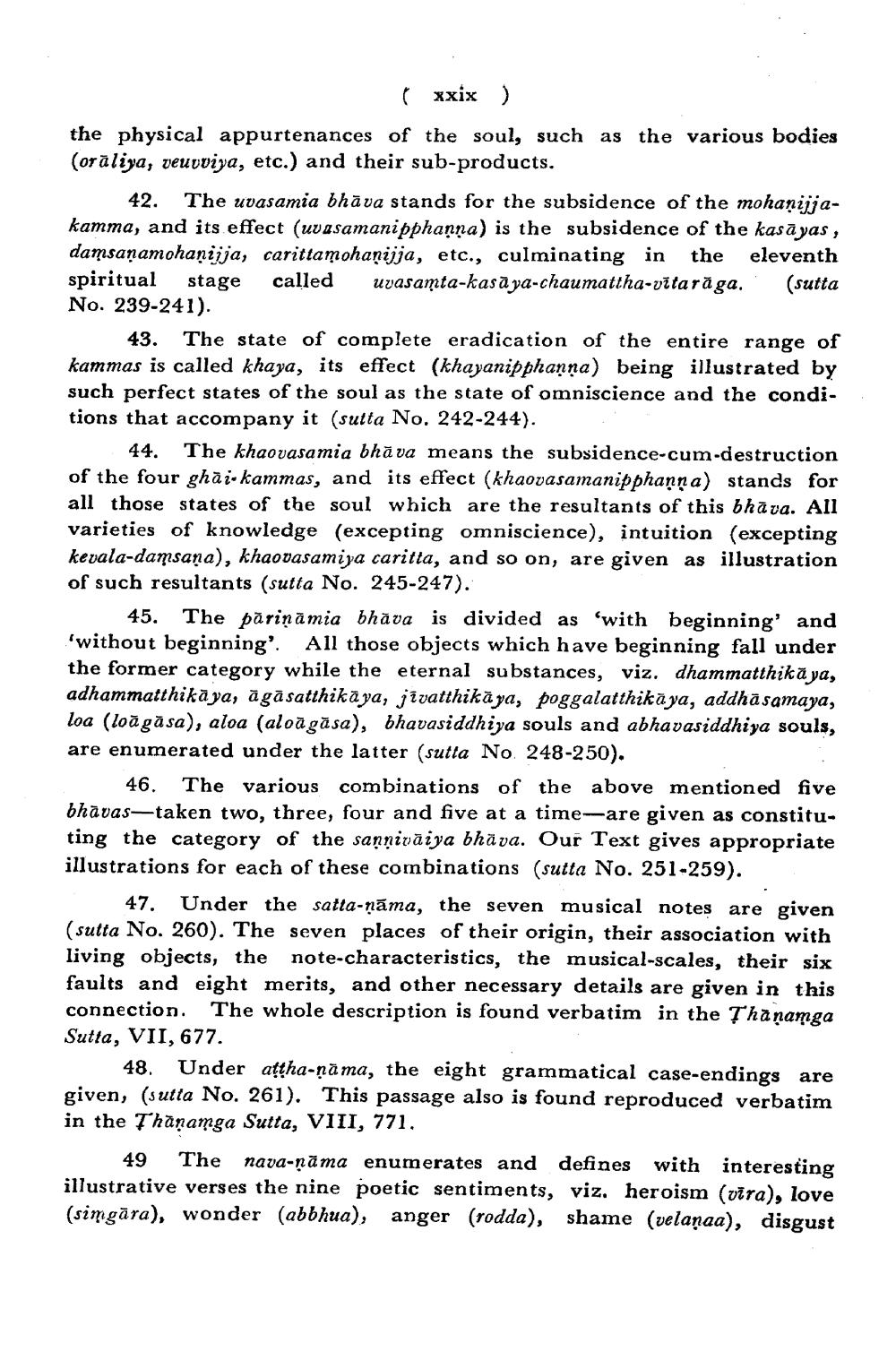________________
( xxix)
the physical appurtenances of the soul, such as the various bodies (oraliya, veuvviya, etc.) and their sub-products.
42. The uvasamia bhāva stands for the subsidence of the mohanijjakamma, and its effect (uvasamanipphanna) is the subsidence of the kas āyas, damsaņamohanijja, carittamohanijja, etc., culminating in the eleventh spiritual stage called uvasamta-kasāya-chaumattha-vitarăga.' (sutta No. 239-241).
The state of complete eradication of the entire range of kammas is called khaya, its effect (khayanipphanna) being illustrated by such perfect states of the soul as the state of omniscience and the conditions that accompany it (sulta No. 242-244).
44. The khaovasamia bhāva means the subsidence-cum-destruction of the four ghāi-kammas, and its effect (khaovasamanipphanna) stands for all those states of the soul which are the resultants of this bhāva. All varieties of knowledge (excepting omniscience), intuition (excepting kevala-damsana), khaovasamiya caritta, and so on, are given as illustration of such resultants (sutta No. 245-247).
45. The pārināmia bhāva is divided as 'with beginning and 'without beginning'. All those objects which have beginning fall under the former category while the eternal substances, viz. dhammatthika ya, adhammatthika ya, ägāsatthikaya, jivatthikaya, poggalatthika ya, addha samaya, loa (loā gāsa), aloa (aloagăsa), bhavasiddhiya souls and abhavasiddhiya souls, are enumerated under the latter (sutta No. 248-250).
46. The various combinations of the above mentioned five bhāvas—taken two, three, four and five at a time--are given as constituting the category of the sannivăiya bhäva. Our Text gives appropriate illustrations for each of these combinations (sutta No. 251-259).
47. Under the satta-nāma, the seven musical notes are given (sutta No. 260). The seven places of their origin, their association with living objects, the note-characteristics, the musical-scales, their six faults and eight merits, and other necessary details are given in this connection. The whole description is found verbatim in the Thanamga Sutta, VII, 677.
48. Under attha-nama, the eight grammatical case-endings are given, (sutta No. 261). This passage also is found reproduced verbatim in the Thanamga Sutta, VIII, 771,
49 The nava-nāma enumerates and defines with interesting illustrative verses the nine poetic sentiments, viz, heroism (vira), love (simgāra), wonder (abbhua), anger (rodda), shame (velanaa), disgust




